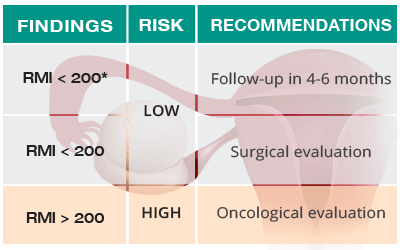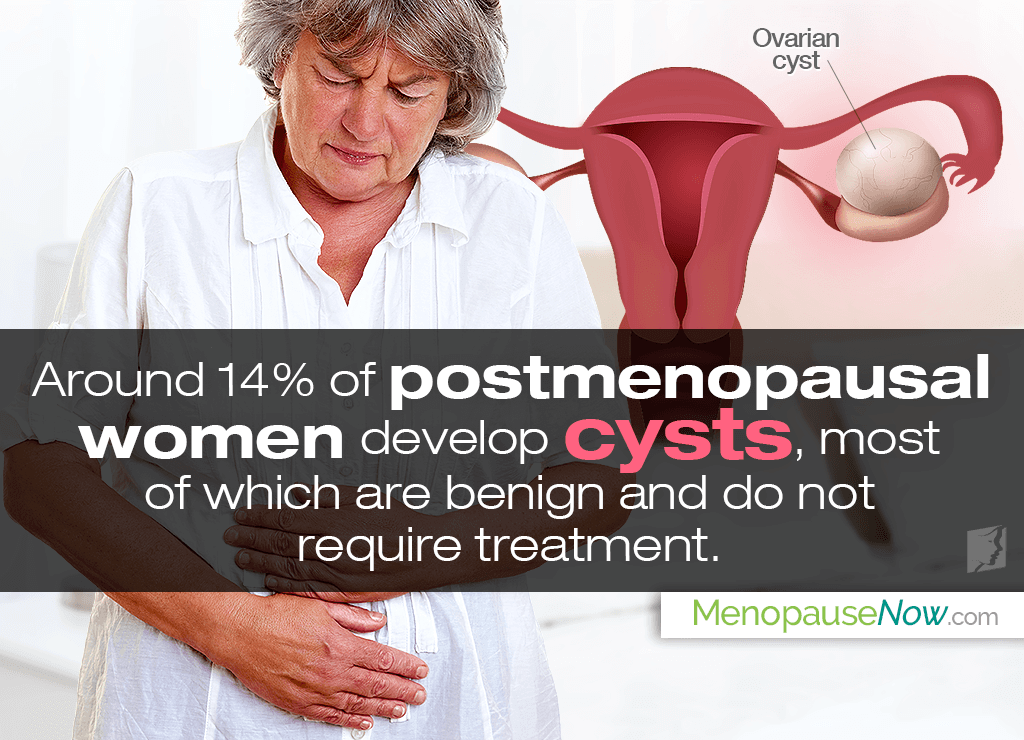An ovarian cyst is a sac of fluid that grows in or on the outside of the ovary. Before menopause, ovarian cysts are very common. In fact, most women will have them at some point in their lives. However, those women who suffer from them long after their last menstruation may wonder whether they should be concerned.
Continue reading to learn more about ovarian cysts after menopause, including what causes them, are ovarian cysts common after menopause, and what symptoms they can produce.
Causes of Ovarian Cysts after Menopause
Ovarian cysts develop when a follicle fails to break open and release an egg during ovulation, and thus retain their fluid. Cysts can also happen after an egg has been released from a follicle.
Ovarian cysts are most commonly caused by hormonal imbalances. Other types of ovarian cysts might be related to certain health conditions, including endometriosis.
Are Ovarian Cysts Common after Menopause?
It is estimated that around 14% of postmenopausal women develop cysts.1
While cysts are usually benign and don't require treatment as they disappear by themselves within 8 to 12 weeks, sometimes they can cause pain or become malignant.
Symptoms of Ovarian Cysts after Menopause
Though ovarian cysts don't always cause symptoms and can disappear on their own, there are some symptoms that may indicate their presence.
The most common symptoms of ovarian cysts after menopause, especially those large in size, include:
- Pain in the lower abdomen or pelvis
- Bloating or heaviness of the abdomen
Other symptoms that might indicate a ruptured cysts and call for an immediate medical attention include:
- Pain with nausea and vomiting
- Fever, weakness, and dizziness
- Rapid breathing
Although ovarian cysts are usually benign, visit your doctor regularly to get symptoms checked out, especially in postmenopause.
Diagnosis of Ovarian Cysts after Menopause

To diagnose ovarian cysts after menopause, usually a doctor will perform an ultrasound to see their size, shape, and location. Blood tests are likely to be done to investigate the cause and type of the cyst as well as the risk of ovarian cancer.
To be classified as an ovarian cyst, the growth must be larger than one inch (two centimeters), but cysts can grow to a wide range of sizes, including up to three inches (eight centimeters).
Treatment of Ovarian Cysts after Menopause
Treatment options may involve surgery to remove the cysts or other treatments for health conditions that may be causing them. Surgery, including ovary removal, may be recommended for postmenopausal women with large, non-simple cysts and other risks factors, such as history of ovarian or breast cancer.
More Information
Cysts after menopause - along with various other symptoms and conditions - can be credited to a hormonal imbalance taking place in women's bodies during the end of their fertile years. Click on the following link to learn about postmenopause treatments so that you can soar into your twilight years without many discomforts. Although this transition cannot be prevented, your quality of life is in your hands.
Sources
- Mayo Clinic. (2017). Ovarian cysts: Symptoms & causes. Retrieved April 5, 2019 from https://www.mayoclinic.org/diseases-conditions/ovarian-cysts/symptoms-causes/syc-20353405
- MedlinePlus. (2018). Ovarian cysts. Retrieved April 5, 2019 from https://medlineplus.gov/ency/article/001504.htm
- University of Wisconsin Hospitals and Clinic. (2017). Surgery for Ovarian Cysts. Retrieved April 5, 2019 from https://www.uwhealth.org/health/topic/surgicaldetail/surgery-for-ovarian-cysts/hw178611.html
Footnotes:
- Royal College of Obstetricians & Gynaecologists. (2016). The Management of Ovarian Cysts in Postmenopausal Women. Retrieved January 27, 2020 from https://www.rcog.org.uk/globalassets/documents/guidelines/green-top-guidelines/gtg_34.pdf




